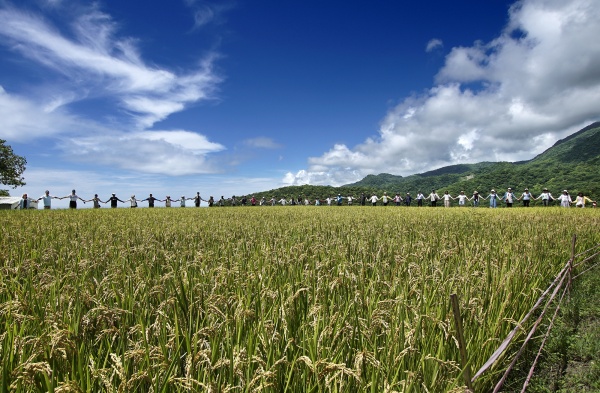ACTIVITIES

TOPACTIVITIESIPSI Collaborative ActivitiesStrengthening National Biodiversity and Forest Carbon Stock Conservation through Landscape-based Col...
Strengthening National Biodiversity and Forest Carbon Stock Conservation through Landscape-based Collaborative Management of Cambodia’s Protected Area System as Demonstrated in the Eastern Plains Landscape (CAMPAS)
Lead organization: Ministry of Environment, Cambodia
Other participating organizations: Institute of Environmental Rehabilitation and Conservation (ERECON), BirdLife, Live & Learn, WWF and Wildlife Conservation Society (WCS), General Secretariat of the National Council for Sustainable Development (GSSD), General Directorate of Administration for Nature Conservation and Protection (GDANCP), and General Directorate of Local Community (GDLC)
1. Background
The Mondulkiri and Kratie Provinces in eastern part of Cambodia are considered to hold one of the largest intact and incredibly biodiverse forest. Even though this region is very important sanctuary, the area has been continually deforested and degraded mainly due to economic purposes. To halt this negative trend and provide model for sustainable use of natural resources, the Ministry of Environment (MoE) of Cambodia and NGO Consortium, supported by the UN Environment Programme and the Global Environment Fund (GEF) implemented the “CAMPAS Project”.
2. Activities
The project is delineated into two main components:
Component 1: Strengthened national vision and support for landscape-based protected area and forest management.
Component 2: Integrated landscape management to safeguard forests, biodiversity, and carbon stocks in the Eastern Plains Landscape.
3. Expected Outcomes
The CAMPAS project aims to enhance Cambodia’s Protected Area System (PAS) management effectiveness and secure forest carbon by improving inter-sectoral collaboration, landscape connectivity and sustainable forest management, with a focus on the Eastern Plains Landscape (EPL) in Mondulkiri Province.
As its title suggests, the project holds the interconnected aim to improve the sustainability of Cambodia’s national system of protected areas, with the complementary objectives to mainstream biodiversity into production forests and promoting conservation of carbon stocks.
The project contributes to strategic objective three of the IPSI Plan of Action: “Enhance benefits from SEPLS”. The outcomes will support local communities to govern their resources in a sustainable manner and improve social cohesion and local economies. In addition, activities promote holistic approach in the implementation of climate change adaptation and mitigation plans as well as reducing habitat conversion, over-exploitation, pollution.
4. Actors and Task Sharing
Main actors in this project are the Ministry of Environment of Cambodia and NGO Consortium – Bird Life, Live & Learn, ERECON, WWF and WCS. The Ministry of Environment has the role of project executing organization and the international non-government organizations have been working with, and providing technical support to, government agencies in the Eastern Plains Landscape. Each of the consortium partners taking leadership in those aspects of their work where they were recognized as leaders. ERECON focused on activities related to (i) environmental rehabilitation and conservation, (ii) sustainable use of natural resources, and (iii) environmental education. Significantly, ERECON has developed a case study looking at part of the target landscape as a Socio-Ecological Production Landscape (SEPL), in-line with the Convention on Biological Diversity Satoyama Initiative.
The efforts and activities of the Institute of Environmental Rehabilitation and Conservation (ERECON) were focused on the project framework deliverable 2.4: Community-based Forest management and rehabilitation established in community natural resource management areas based on the Mondulkiri Provincial Spatial Plan. ERECON project activities are conducted in Pou Trom Community Forestry (CF) in Pou Trom Village, Romonea Commune, Sen Monorom City, Trapeang Kraoem CPA in Pu Chrey Commune, Pech Chada District, Mondulkiri Province and Veal Kambor Community Protected Areas (CPA) in Lomphat District, Ratanakiri Province. First objective of this activities is to establish of habitat restoration with native tree planting and agro-forestry practices over at least 500 hectares, and the second objective is to increase of resource and livelihood security for communities in protected areas.
5. Resources, Funding
The total budget for the project activities is co-financed by GEF/UNEP and a partner alliance of international non-government organizations. The GEF Trust Fund is 4,718,182 USD (24.5%) and co-funding from partners is 14,570,590 USD (75.5%).
6. Monitoring and Reporting
The project follows standard monitoring, reporting, and evaluation processes and procedures of UNEP, undertaken by the project manager together with members of co-funding organizations, and a team of independent consultants for the project mid-tern and terminal evaluations.


